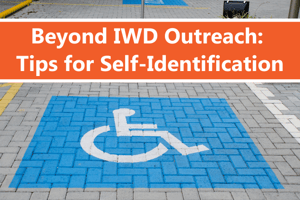 It has been over a year since the OFCCP announced the 503 Focused Reviews and many of the scheduled reviews have now occurred. Most contractors are following the self-ID regulations: asking applicants pre-offer, as well as new employees post-offer. Now that the regulations have been in place for almost 7 years, most contractors have completed the 5-year resurvey. However, one study found only 15% of contractors were meeting the 7% or utilization rate four years after the implementation of the Section 503 regulations. Something we commonly hear from our clients is, “We’re asking, and we know there are more in our workforce, but since it’s voluntary, they aren’t identifying!” Berkshire has compiled a list of tips for creating an inviting culture for employees who are individuals with disabilities to help increase self-ID responses.
It has been over a year since the OFCCP announced the 503 Focused Reviews and many of the scheduled reviews have now occurred. Most contractors are following the self-ID regulations: asking applicants pre-offer, as well as new employees post-offer. Now that the regulations have been in place for almost 7 years, most contractors have completed the 5-year resurvey. However, one study found only 15% of contractors were meeting the 7% or utilization rate four years after the implementation of the Section 503 regulations. Something we commonly hear from our clients is, “We’re asking, and we know there are more in our workforce, but since it’s voluntary, they aren’t identifying!” Berkshire has compiled a list of tips for creating an inviting culture for employees who are individuals with disabilities to help increase self-ID responses.
First and most importantly, employees need to understand why they are being asked. Self-identification data is used, usually in aggregate, for statistical and reporting purposes only. It should be clear that self-ID is voluntary and confidential. It is different than self-disclosure, which may include presenting documentation for reasonable accommodation or to create a welcoming environment. Still, employees may be fearful that the self-identification could affect their employment, opportunities, relationships, or health care coverage. Be sure that communications sent with the mandated self-ID form clarifies the organization’s intent and commitment to diversity. Note that this form was just revised and the new form should be used updated in the ATS and used in future workforce surveys.
Next, in order to see change, there needs to be a focus on and resources dedicated to disability awareness. There should be a holistic, integrated approach across the organization to create a supportive culture. While some large organizations may have the funds to provide incentives during a self-ID campaign, these initiatives don’t have to also mean major costs:
- Show executive level support by including the top level official’s commitment in the mission statement or sending a letter at the start of a campaign. It helps if they disclose any disability, too!
- Explain additional reasons why the question is asked and why it might be beneficial to the employee. The organization may use the data to determine if additional programs or benefits would be useful to employees, during proposals for business, to determine a budget used exclusively for reasonable accommodations, or to ensure outreach efforts are effective. Provide FAQs and be clear that the data is only used in aggregate; their self-ID response is confidential.
- While the regulations require a resurvey every 5 years, to further show the organization’s commitment to supporting individuals with disabilities, solicit voluntary self-ID more often. Many successful companies will have a campaign every couple of years.
- Create memorable themes, logos, and slogans for the campaign. Also integrate other Diversity & Inclusion areas, such as LGBTQ+, Veterans, or generations.
- Utilize Employee Resource Groups and create webinars or lunch & learns about disability or other diversity & inclusion topics.
- Increase personal story telling and testimonials through blogs, videos, or newsletters to make others feel more comfortable.
- While the campaign doesn’t have to be in October during Disability Employment Awareness Month, be sure to recognize the occasion.
- Don’t forget about the caregivers in the workforce. Recognize and appreciate their challenges and any accommodations they might need.
- Research strategies from other companies who are successful, like Northrop Grumman, PepsiCo, Eli Lilly and Company, DuPont, and TD Bank. A video is available on the OFCCP website.
- Utilize other resources, such as Employer Assistance and Resource Network on Disability Inclusion (EARN), DOL’s Office of Disability Employment Policy (ODEP), or Disability:IN.
For more information, EARN recently partnered with NILG to develop strategies which address the five most common reasons for not self-identifying. By being open and creating a welcoming, supportive environment, you can encourage employees to bring their “whole selves” to work!
-1.png)
.png?width=593&name=MicrosoftTeams-image%20(4).png)